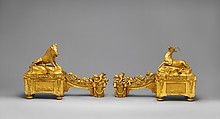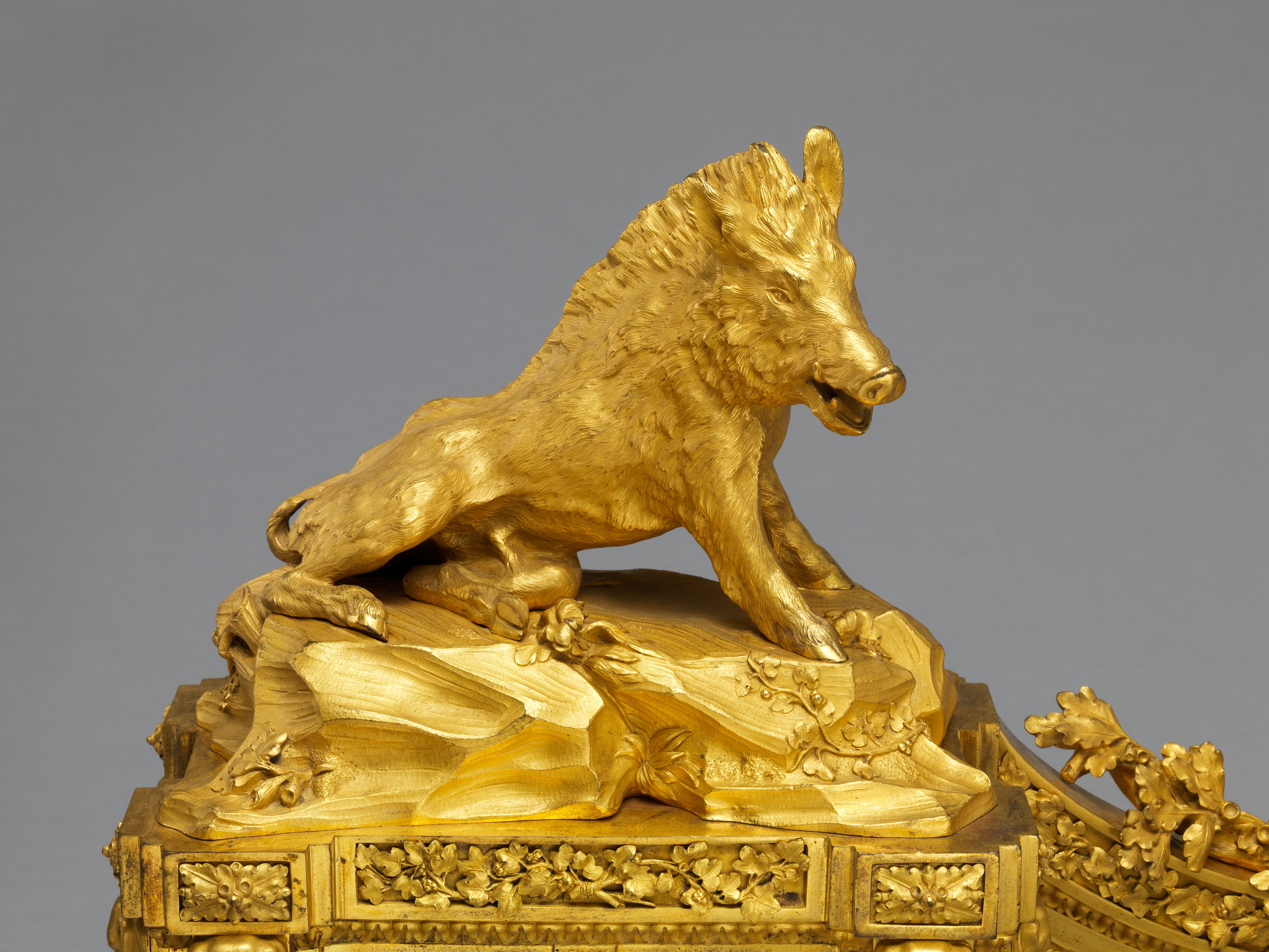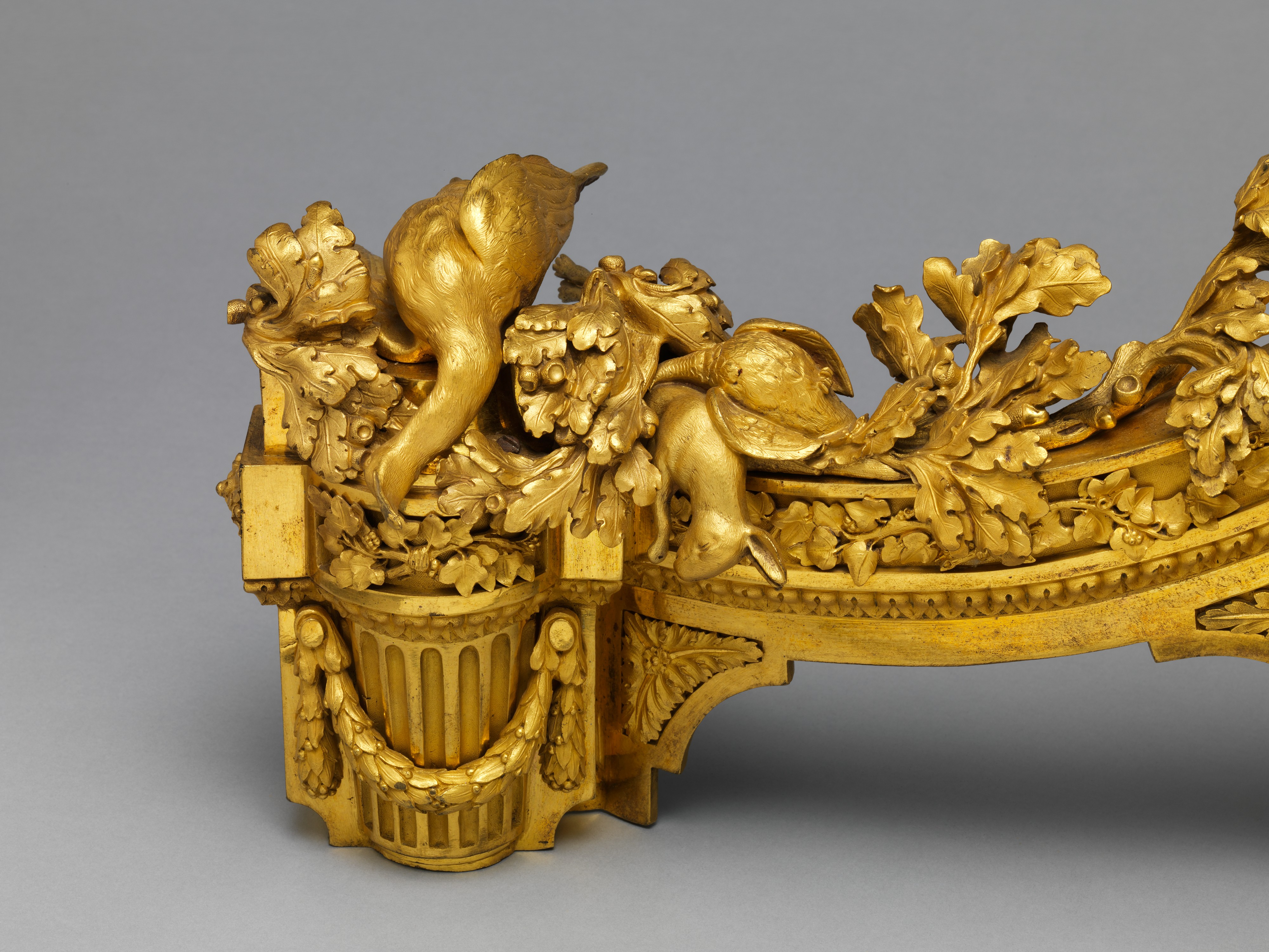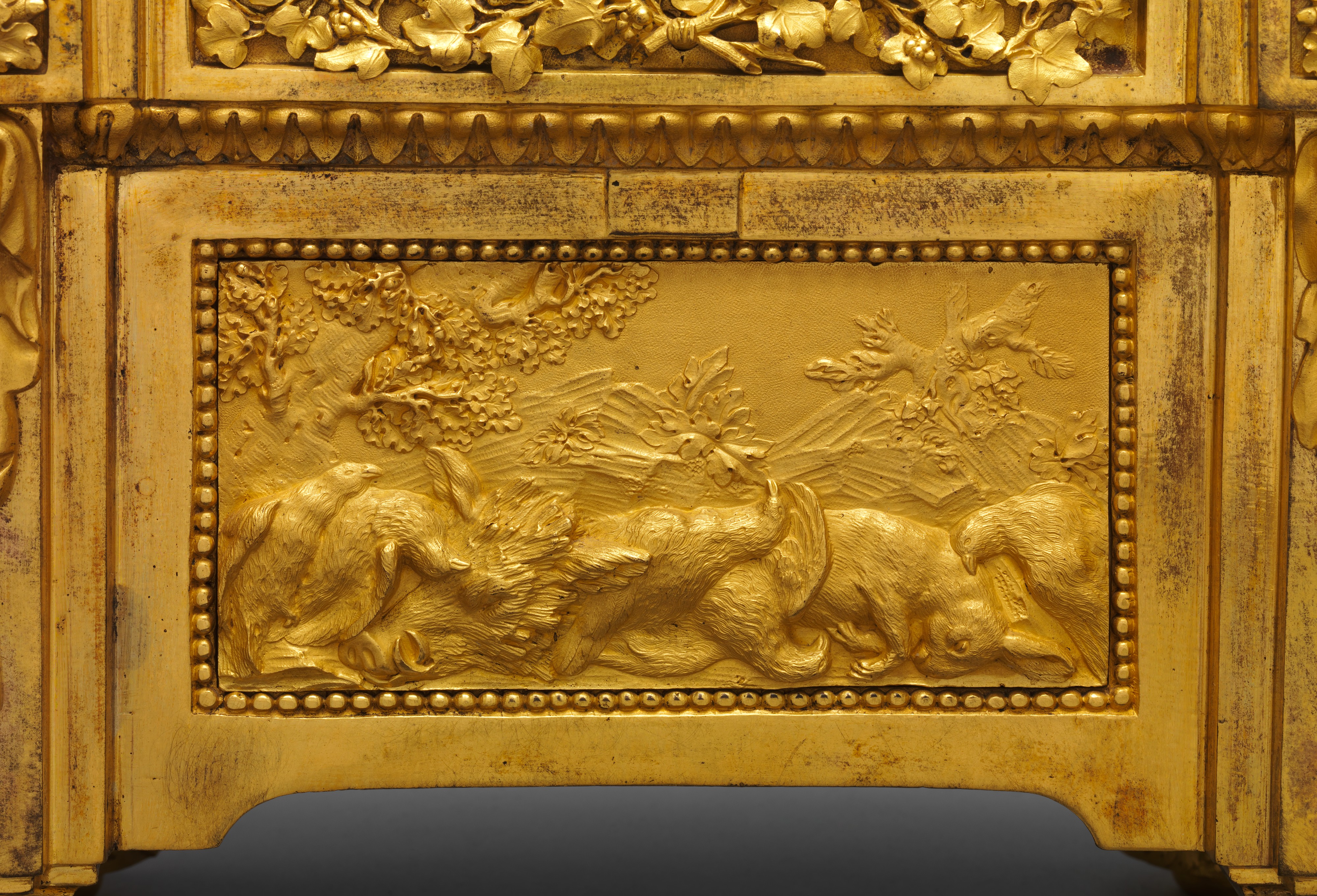Pair of firedogs (chenets)
Quentin-Claude Pitoin French
Attributes of hunting embellish these highly accomplished models, which are known to have been repeated in different sizes. The small sculpture of a wild boar on the left andiron and of a reclining stag on the other surmount a rectangular base, which is further enriched with a relief panel in front showing, below the boar, dead game and, below the stag, a sleeping hound amid game. Dogs’ pelts, oak and ivy branches, and a pile of additional game, all beautifully chased and finished, are also incorporated in the elaborate designs. The figure of the boar at bay is derived from a lifesize Roman marble in the Galleria degli Uffizi, in Florence. That antique sculpture was reproduced in bronze, much reduced in size, by the Florentine sculptor and bronze caster Giovanni Francesco Susini (1585–ca. 1653). One of his early seventeenth-century replicas was probably the source for the sculptural boar on the Museum’s andiron. Madame du Barry appears to have been the first to own a pair of firedogs of this model. They were delivered for use in her apartment at the royal hunting castle at Fontainebleau in October 1772 by Quentin-Claude Pitoin, principal supplier of bronzes d’ameublement to the court.
The Museum’s andirons are believed to have been in the possession of the French statesman Charles Gravier, comte de Vergennes (1719–1787), who was sent as envoy to Trier and appointed ambassador to the Ottoman Empire and Sweden, and who later served as foreign minister under Louis XVI. The moving flames of a fire on the hearth, reflected in the differently worked surfaces of the firedogs, would have brought the stag and the boar, albeit temporarily, to life.
Due to rights restrictions, this image cannot be enlarged, viewed at full screen, or downloaded.
This artwork is meant to be viewed from right to left. Scroll left to view more.







